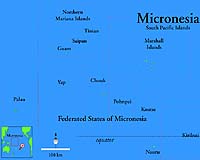| . |  |
. |
Washington DC (SPX) Jul 29, 2009 NOAA-supported scientists, led by Nancy Rabalais, Ph.D., from the Louisiana Universities Marine Consortium (LUMCON), found the size of this year's Gulf of Mexico dead zone to be smaller than forecasted, measuring 3,000 square miles. However the dead zone, which is usually limited to water just above the sea floor, was severe where it did occur, extending closer to the water surface then in most years. Earlier this summer, NOAA-sponsored forecast models developed by R. Eugene Turner, Ph. D. of Louisiana State University and Donald Scavia, Ph.D. of the University of Michigan, predicted a larger than normal dead zone area of between 7,450 - 8,456 square miles. The forecast was driven primarily by the high nitrate loads and high freshwater flows from the Mississippi and Atchafalaya rivers in spring 2009 as measured by the U.S. Geological Survey. Rabalais believes the smaller than expected dead zone is due to unusual weather patterns that re-oxygenated the waters, among other factors. "The winds and waves were high in the area to the west of the Atchafalaya River delta and likely mixed oxygen into these shallower waters prior to the cruise, thus reducing the area of the zone in that region," said Rabalais. "The variability we see within each summer highlights the continuing need for multiple surveys to measure the size of the dead zone in a more systematic fashion." "The results of the 2009 cruise at first glance are hopeful, but the smaller than expected area of hypoxia appears to be related to short-term weather patterns before measurements were taken, not a reduction in the underlying cause, excessive nutrient runoff." said Robert Magnien, PhD., director of NOAA's Center for Sponsored Coastal Ocean Research. "The smaller area measured by this one cruise, therefore, does not represent a trend and in no way diminishes the need for a harder look at efforts to reduce nutrient runoff." The average size of the dead zone over the past five years, including this cruise, is now 6,000 square miles. The interagency Gulf of Mexico/Mississippi River Watershed Nutrient Task Force has a goal to reduce or make significant progress toward reducing this dead zone average to 2,000 square miles or less by 2015. The Task Force uses a five year average due to relatively high interannual variability. The dead zone is fueled by nutrient runoff, principally from agricultural activity, which stimulates an overgrowth of algae that sinks, decomposes, and consumes most of the life-giving oxygen supply in the water. The Gulf of Mexico dead zone is of particular concern because it threatens valuable commercial and recreational Gulf fisheries that generate about $2.8 billion annually. The models used to forecast the area of the dead zone are constructed for understanding the important underlying causes to inform long-term management decisions, but they do not include short-term variability due to weather patterns. Prior to the LUMCON cruise, NOAA's Southeast Monitoring and Assessment Program (SEAMAP) found a similar sized dead zone during its annual five-week summer fish survey. Share This Article With Planet Earth
Related Links NOAA Water News - Science, Technology and Politics
 Micronesian states appeal for help on rising sea levels
Micronesian states appeal for help on rising sea levelsMajuro (AFP) July 17, 2009 Leaders of Micronesian states have appealed for international help to avoid being wiped out by rising sea levels. "We will all be drowning in our own backyards if leaders of developed nations do not take swift action to reduce greenhouse gas emissions," Federated States of Micronesia President Emanuel Mori said. He was speaking at a meeting of presidents and governors from ... read more |
|
| The content herein, unless otherwise known to be public domain, are Copyright 1995-2009 - SpaceDaily. AFP and UPI Wire Stories are copyright Agence France-Presse and United Press International. ESA Portal Reports are copyright European Space Agency. All NASA sourced material is public domain. Additional copyrights may apply in whole or part to other bona fide parties. Advertising does not imply endorsement,agreement or approval of any opinions, statements or information provided by SpaceDaily on any Web page published or hosted by SpaceDaily. Privacy Statement |